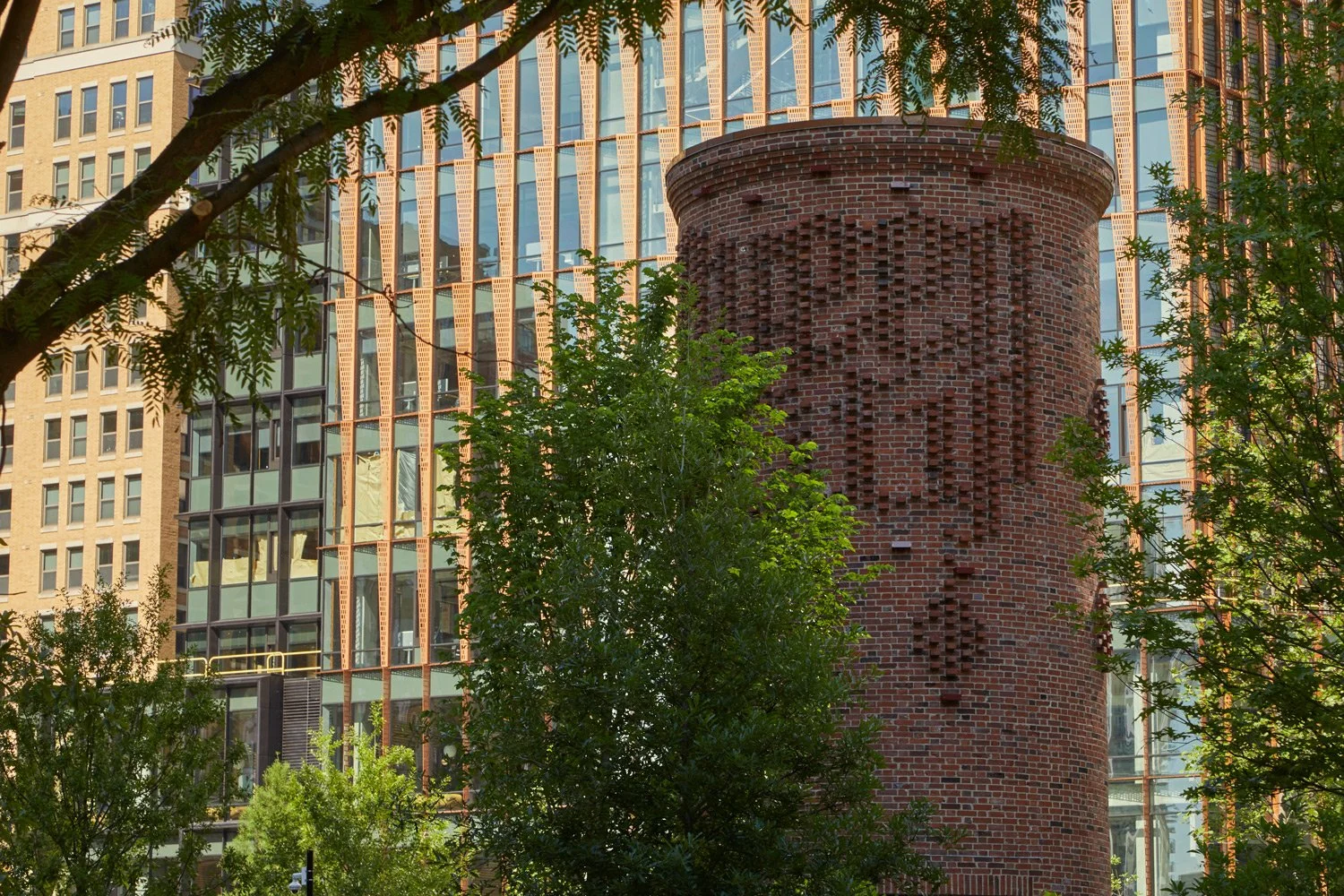
August
Julia
Gutman
Sydney-based artist Julia Gutman uses fabric to tell stories. After earning her MFA at the Rhode Island School of Design, she thought she would teach full-time, but the artist’s former studio-mate died unexpectedly, and Gutman returned to Australia to cope with the loss. A chance encounter with a sewing machine before the pandemic led her to pivot, and today she works exclusively with donated materials—sheets and towels, clothing, and tablecloths—sketching constantly, and then scaling her drawings onto a large sheet, only then cutting the material, going over each work instinctually with her sewing machine, and crafting scenes from nothing but thread and textile. Her process is fluid, often founded in friends’ posing, blending conceptually loaded materials with more functional selections. The artist works experimentally, repositioning her textiles dozens of times in some cases; there’s infinite room to explore through her embroidery, to shift the subjects in her narrative compositions. Gutman’s approach is just as important as the final product: a culmination of her thoughts and emotions.
Some of her work’s riff on historical paintings—generally those of women painted by men—for instance, Balthus’s The White Skirt (1937), which depicts the artist’s then-wife Antoinette de Watteville, who was just 12 years old when the couple met. Gutman’s version is called The Black Jeans (2021), and it’s something of a parody of the original’s demure posing. Here she may still ask friends to pose, but the approach is one of mimicry; Gutman will begin with a fixed composition and then make adjustments, investigating how one might project the self onto the other. She’s read academic literature about the Wurzburg Witch Trials from the 1600s; more recently, Gutman researched the concept of historical exclusion in a book called Feeling Jewish by Devorah Baum, and she cites Mary Gaitskill, Ross Gay, and Zadie Smith as additional points of reference. “The self is unknowable,” she notes; yet Gutman finds that dissonance compelling.
–Charles Moore
Julia Gutman’s residency was generously sponsored in part by Adriana and Ricardo Malfitano.
No one Told Me the Shadows Could Be so Bright (2020); clothes worn and forgotten by Gutman’s friends, found tablecloths, wire, thread, wooden frame, Industrial chains.
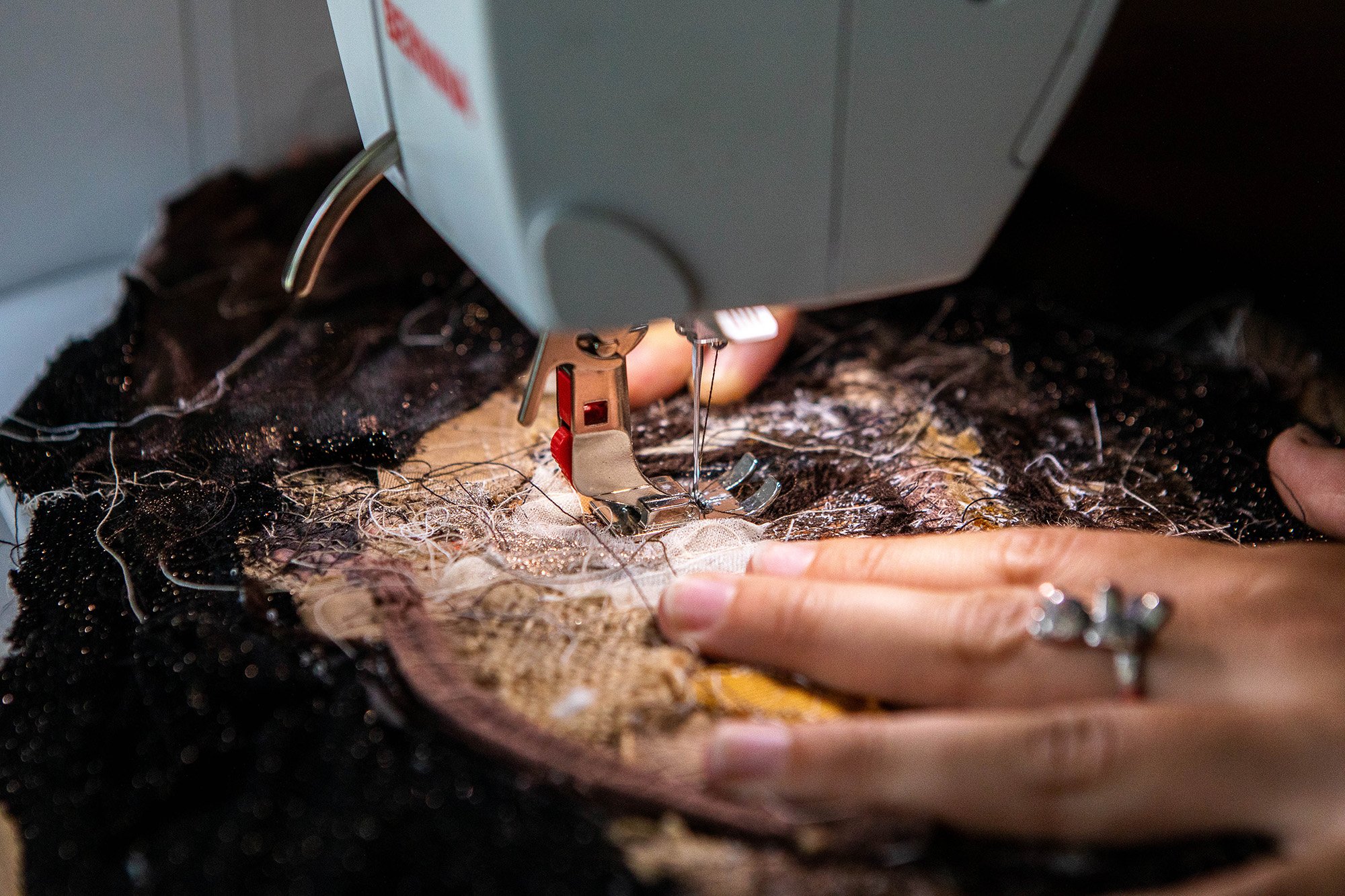
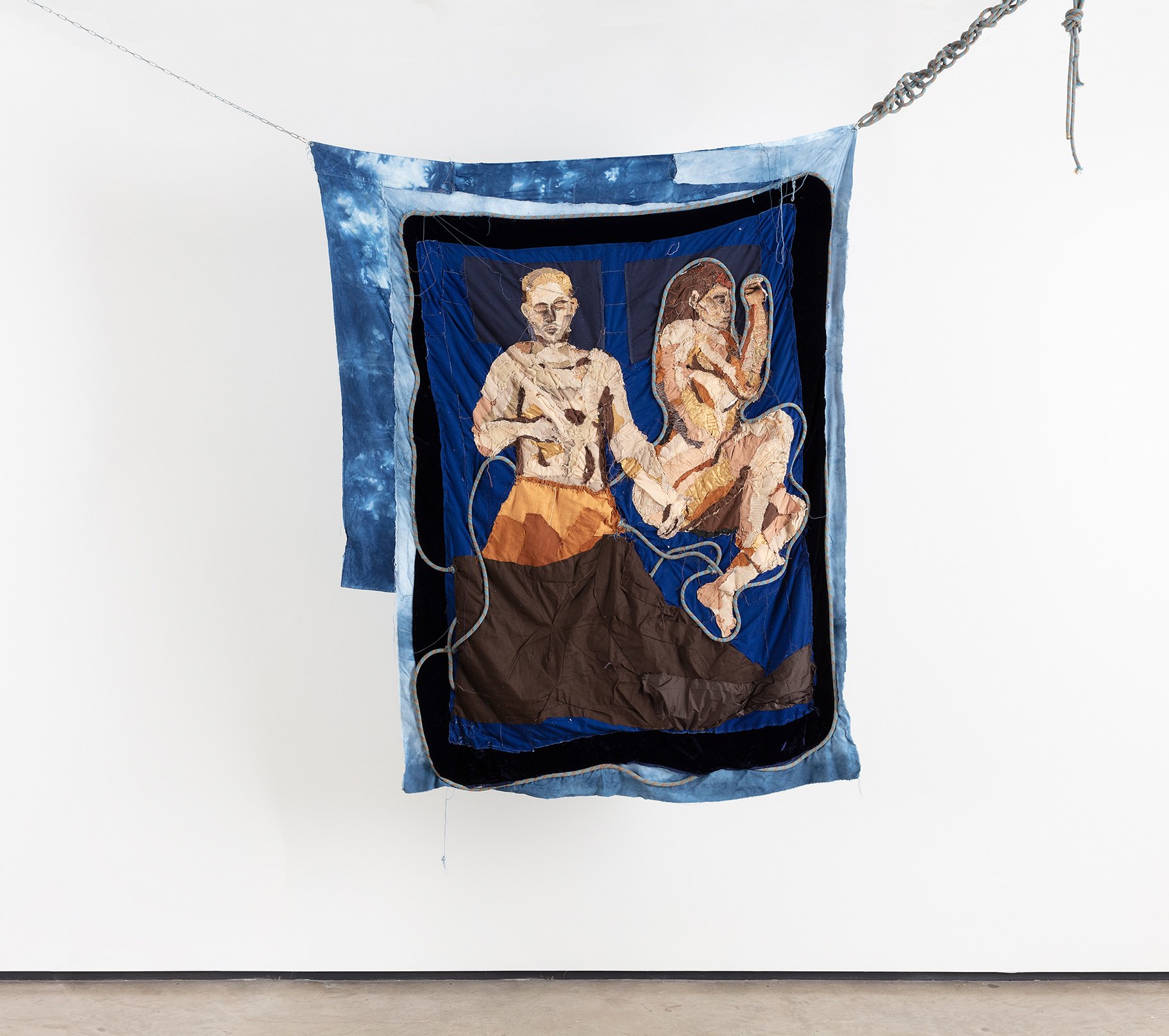


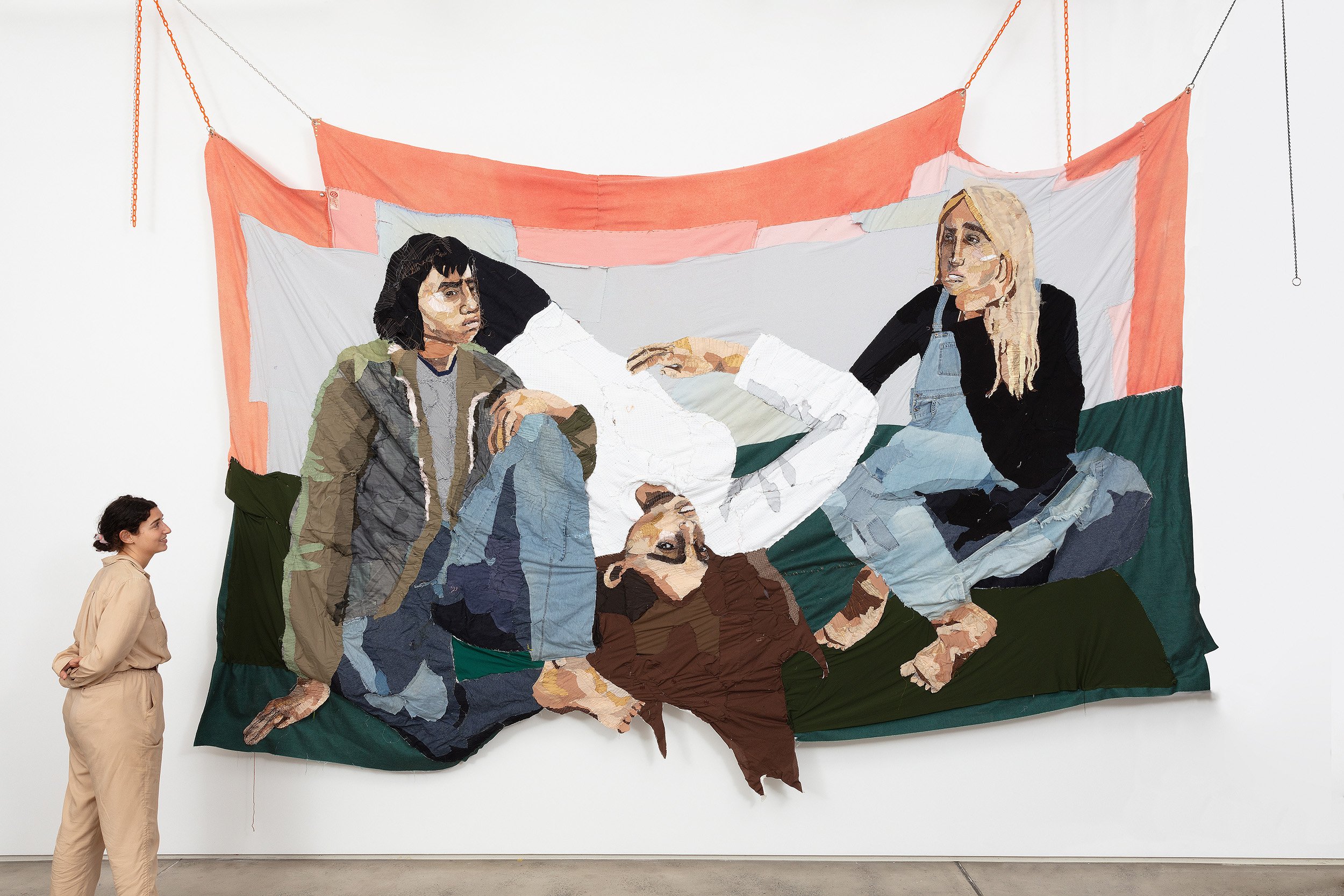
Clockwise from left: Julia Gutman’s works involve sewing used clothing and textiles together to make figurative, life-size sculptures. Bed Politics (2022); donated textiles and embroidery, metal chain, donated rope. A portrait of Gutman by Jayme Gershen. Once More with Feeling (2022); donated textiles and embroidery, plastic chain. Detail of No one Told Me the Shadows Could Be so Bright (2020); clothes worn and forgotten by Gutman’s friends, found tablecloths, wire, thread, wooden frame, and Industrial chains.
Manoela
Medeiros
Brazilian artist Manoela Medeiros paints in a manner that transcends the medium, leveraging sculpture, installation, and performance while interacting directly with the exhibition space. Through a multidisciplinary framework, her artistry goes beyond traditional formats—exploring the relationships between time and space and extending conventional mediums by manipulating their usual forms. To achieve this, Medeiros prefers to improvise: with sculptural representations of forests and valleys, of archeological ruins and shaman masks, positioning audiences in relation to the gallery rooms in which they stand, and forcing them to pivot such that they can physically experience the environments she creates. Experimenting with a blend of natural and artificial light, Medeiros builds works that investigate the physicality of not only art, but of history and the human body. Time and again, she intervenes directly in the spaces where she shows her work, crafting pieces that emerge from the distinctive characteristics of the surrounding architecture; these interventions are organic and transform the public’s interpretation of indoor worlds—of gallery walls and even the flooring underfoot. Her paintings too come alive in their depiction of the natural realm: of leaves and seeds, brambles, and stones.
Returning to archeology, Medeiros delves into the concept of ruins as indicators of the passage of time. She uncovers hidden aspects of seemingly innocuous objects by scraping surfaces, including the drywall of exhibition spaces, revealing layers of colors and materials that were used, concealed, and eventually forgotten. The artist seeks to revitalize our temporal experience by showcasing these layers, each one revealing subtle signs of the room’s creation—operating within a liminal zone between construction and destruction. In every work, Medeiros highlights how these elements complement one another; this not only engages viewers but invites them to contemplate the longevity of artistic expression. The artist is based in Rio de Janeiro and divides her time between Brazil and France.
–Charles Moore
Manoela Medeiros’s residency was generously sponsored in part by Adriana and Ricardo Malfitano.
Still Life (Natura Morta) (2022); pigmented concrete, plaster and brick.


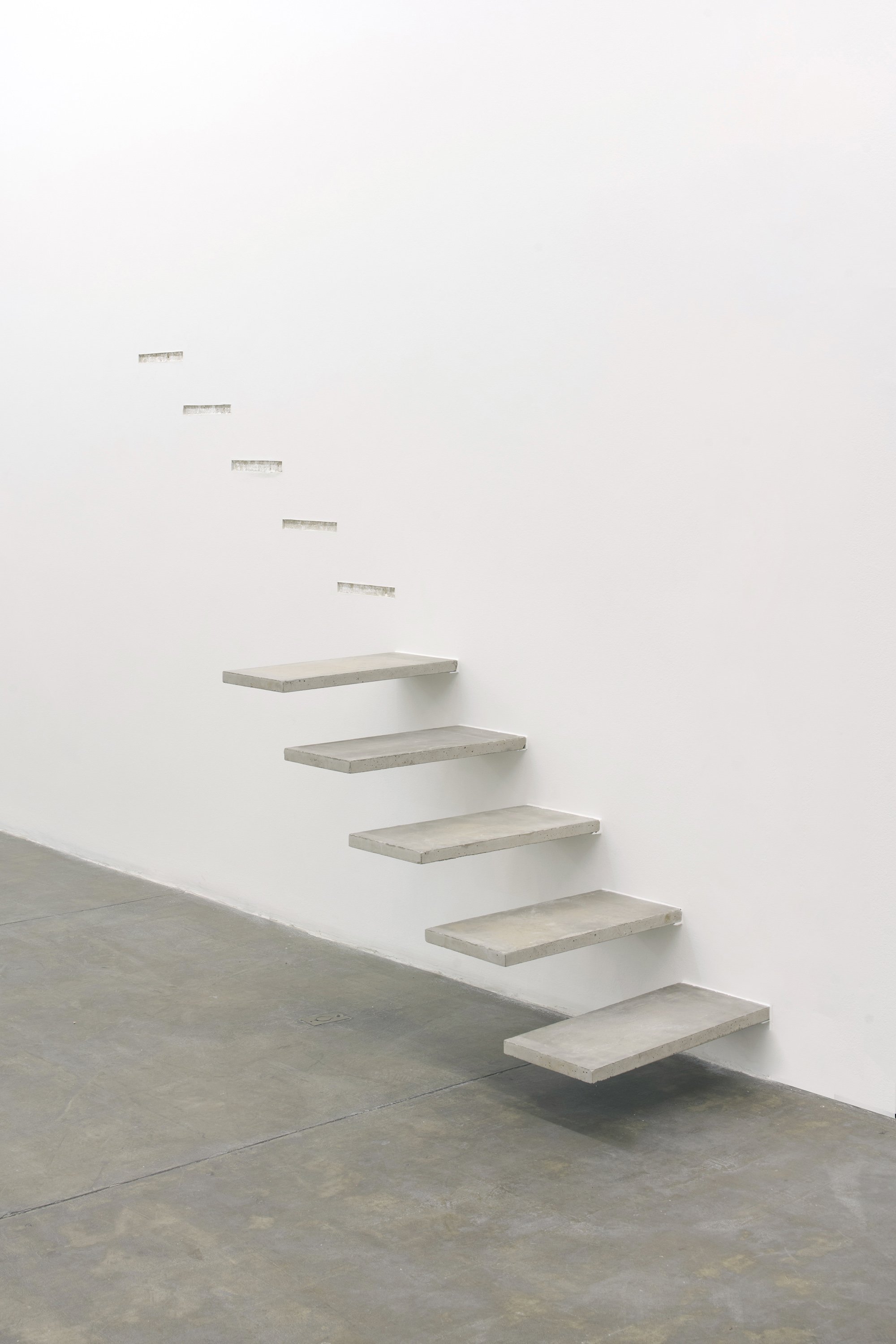


Clockwise from left: A portrait of Manoela Medeiros in her Fountainhead studio, photographed by Jayme Gershen. Spread Seeds (2023); excavation, plaster and painting. SLOPE (2017); concrete and wall excavation. Continent #2 (2023); wall fragments and plaster. At Fountainhead, Medeiros uses her fingers to dig grooves into the paint.
Nekisha
Durrett
Born and raised in Washington, D.C., Nekisha Durrett is a mixed-media artist known for her expansive multidisciplinary works. After completing her MFA at the University of Michigan School of Art and Design, she accepted a graphic production position at the Smithsonian Office of Exhibit Central; it was there she noticed how large-scale imagery seemed to captivate viewers in museum spaces. A photographer by trade, Durrett began—after a three-year lull from making art—shooting scenes that moved her and then printing the images at larger-than-ever scales. Quickly she pivoted to drawing, and then the commissions began. Durrett jokes about having a “short person’s complex,” but the reality is that the scale of her work allows her to speak up in a way that never felt possible under other circumstances.
Inspired by history, Durrett appreciates Toni Morrison’s approach to writing—her focus on the heroism behind the minutiae of everyday life (Durrett cites the author’s shoe metaphor in her novel Song of Solomon). She aspires to do the same in her public artworks, installations, paintings, and sculptures; in terms of her own process, Durrett is adamant that the site in question, and her own research on the surrounding environment, dictates her decision-making; and though she enjoys experimenting with new materials, she’ll work with whatever best allows the story to be told. In June, she unveiled Queen City in Arlington, Virginia, a permanent public artwork commission that invites viewers to consider the erased history that thrived before the Pentagon was built in 1941, when Eminent Domain displaced the surrounding community. Durrett decided to work with bricks because the community in question sat next to the Brickyard, where many of the neighborhood’s Black residents worked. The same bricks these workers created, Durrett learned, were used to lay the foundation for the National Mall; an impressive feat. These laborers were making bricks for other people—so what, then, would they build for themselves? Queen City is an homage to this, and a way of celebrating the beauty in the resistance.
–Charles Moore
Nekisha Durrett’s residency was generously sponsored in part by Adriana and Ricardo Malfitano.
Exterior view of Queen City (2023), unveiled in Arlington, Virginia.


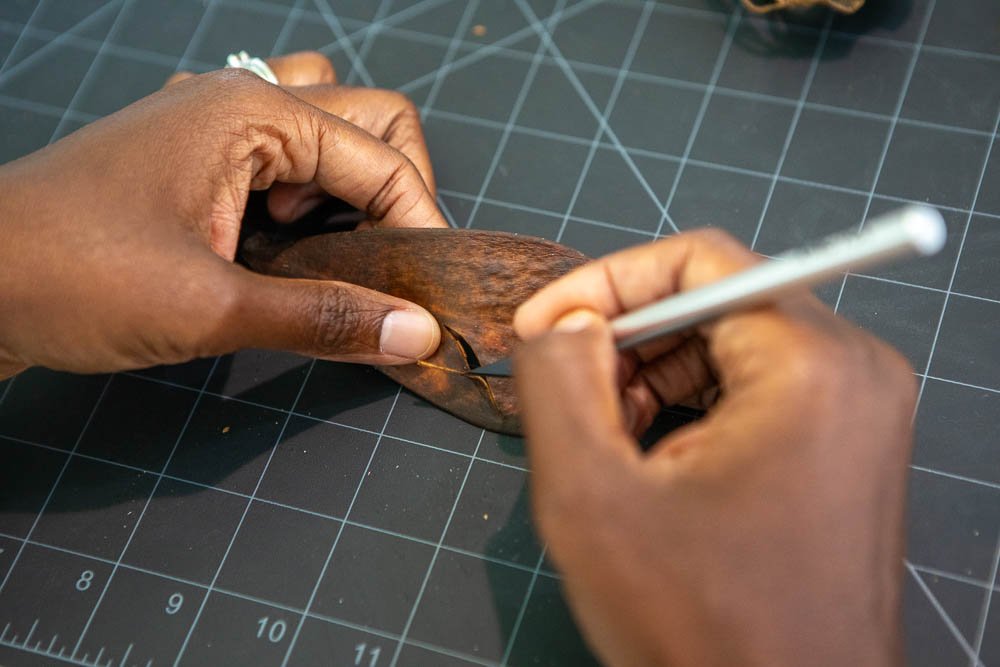


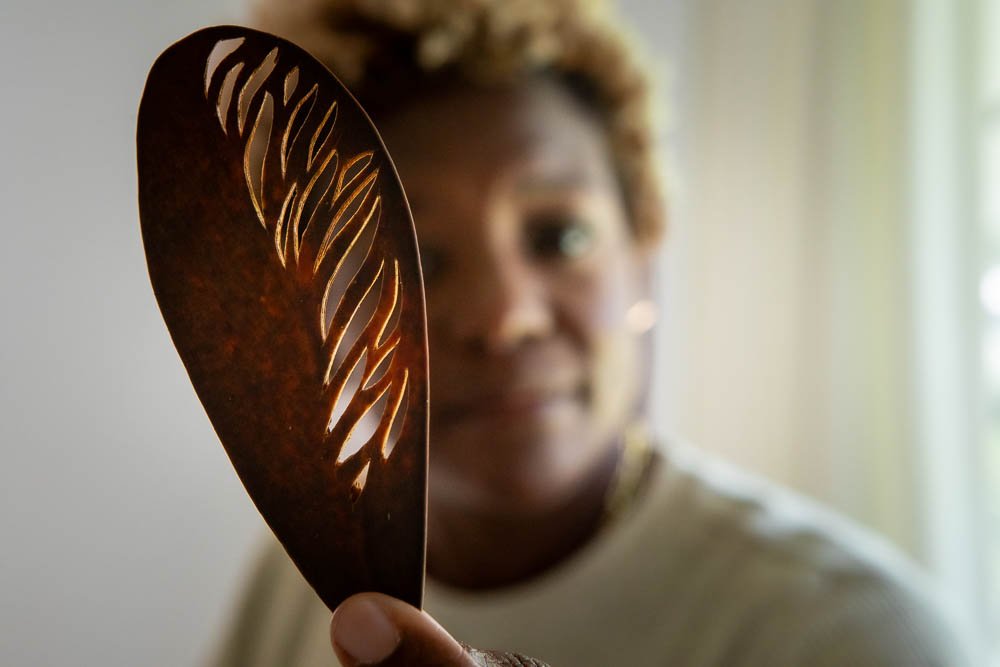
Clockwise from left: Queen City (Interior) (2022-2023); reclaimed brick, concrete, handmade ceramic pottery, steel and aluminum. Nekisha Durrett photographed by Jayme Gershen in her studio at Fountainhead. Durrett carves magnolia leaves with the names of Black women murdered by the police, that she later displays in light boxes to honor their lives and legacy. Genius Loci (2023); a public artwork in West Palm Beach, depicts the form of an RCA gramophone made from copper sheeting and supported by concrete that resembles charred wood, photographed by Oriol Tarridas. Out of the Blue Black (2019); polymer clay.



